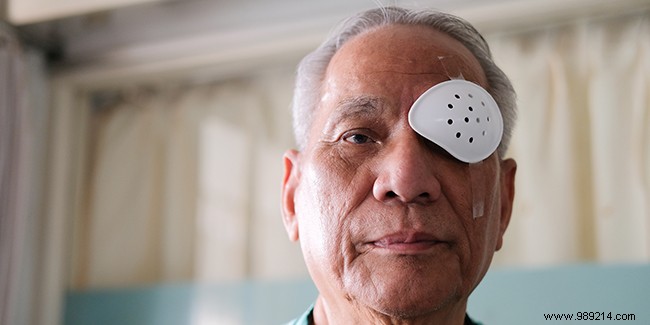
Cataract is a vision disorder caused by the loss of transparency of the lens of the eye, a kind of small oval lens located behind the pupil. This problem usually occurs with age due to the modification of the structure of the lens which becomes opaque.
One in five people is affected from the age of 65, one in three after 75 and almost two in three after 85. Studies tend to show that sun exposure increases the risk of cataracts. This disease affects both men and women equally. In the most severe cases, cataracts can cause blindness. But cataracts can be treated very well today thanks to surgery.
The majority of cases of cataracts are due to aging. In these cases, we speak of senile cataract. With age, the lens of the eye hardens, becomes cloudy and leads to more or less significant vision problems, while the function of this part of the eye is essential since it is what focuses the light. on the retina and allows focusing to achieve sharp vision. 95% of the causes of cataracts are due to the aging of the lens of the eye. Generally, one eye is more affected than the other.
Certain diseases or health conditions can increase the risk of cataracts. We are here in the case of secondary cataract. Poorly controlled diabetes, taking certain medications such as cortisone, exposure to high doses of radiation, eye diseases such as high myopia, glaucoma or even retinal detachment, are so many risk factors for the appearance of cataracts.
Traumatic cataract is the cataract caused by an injury to the eye (blow, cut, burn, etc.) that damages the lens.
Much more rarely, we can meet the cataract of the child. It can accompany a disease such as trisomy 21 or it can be the consequence of a disease (rubella, toxoplasmosis, genital herpes, syphilis) transmitted by the mother to the fetus.
The main symptom of cataract is characterized by blurred vision, the impression of looking through a waterfall, hence the origin of the word cataract:in Latin, 'cataracta' means "waterfall". The sight gradually decreases with a feeling of constantly having fog in front of the eyes, greater sensitivity to bright light and also color vision disorders.
Cataract causes a loss of vision that most often occurs slowly, and ultimately causes problems in all daily activities. In the most advanced cases of the disease, only light is perceptible to the affected eye. Physically, the cataract is also detected when the pupil of the eye no longer appears black but gray, or even milky white.
Cataracts are diagnosed by an ophthalmologist who measures visual acuity and performs a biomicroscope examination. The latter makes it possible to greatly magnify the lens and thus to assess the degree of its opacification.
The only treatment for cataracts, which allows you to regain correct sight, is surgery. This is an intervention that consists of removing the nucleus of the lens by slightly incising the cornea of the eye to replace it with an artificial lens. Increasingly, a faster technique, with less risk of complications, is being used. This is the "phacoemulsification" method which consists of fragmenting the lens into small pieces using ultrasound and sucking them through a small incision. The cataract operation usually takes place under local anesthesia and lasts between 10 and 30 minutes. This surgery allows the patient to go home the same day. The return to normal vision occurs very quickly after the procedure.
Cataract surgery, the technique of which is very well mastered, is the most common surgical intervention in the elderly, some of whom thus regain their full autonomy. Implants placed during surgery can restore 100% vision from afar, but glasses are most of the time necessary to see up close. However, progress is rapid in the treatment of cataracts. Thus, artificial lenses are currently being studied so that patients can regain intact sight both near and far.